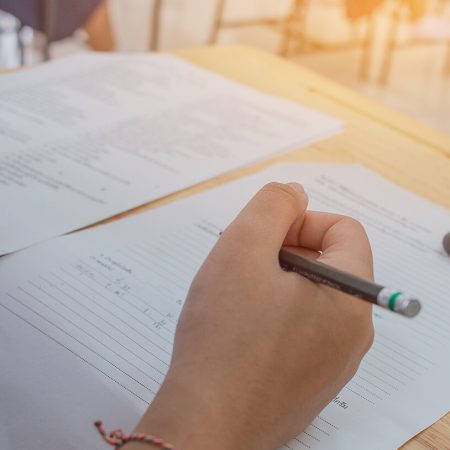A Walk-Through of The Japanese Alphabet

The Japanese language is one of the most beautiful yet complex languages to learn in the world. Its unique structure embodies the rich culture of Japan. It has a sophisticated and distinguished system of honorifics that reflects the hierarchical nature of Japanese society.
Learning the Japanese language is not for the faint-hearted. It starts at the very core of its style, the Japanese writing system. The writing system is the highlight of learning the language as it is the most complex yet fun part of learning it. So if you’re a new language learner, you must first understand and comprehend the center of its system—the Japanese alphabet.
Table of contents
A Walk-Through of The Japanese Alphabet

To have a deeper understanding of the Japanese language, you have to learn its writing systems first. The Japanese writing system is composed of 3 intertwined scripts, namely Hiragana, Katakana, and Kanji.
Hiragana and Katakana are scripts that represent the syllables that make up the Japanese language. They both have a fixed number of symbols: 46 characters. Hiragana is embodying Japanese words and grammatical elements, while Katakana is for words of foreign descent. Kanji, on the other hand, are Chinese characters that the Japanese adopted in the 9th century. These characters represent sound and meaning. Hiragana and Katakana were based and derived from Kanji.
Hiragana, Katakana, and Kanji are all essential in learning the Japanese language as these 3 sets of characters compose the Japanese alphabet writing system. Let’s take a walk-through on these Japanese characters, shall we?
Hiragana – A Beginner’s Best Friend

Hiragana is the most basic of the 3 sets of alphabet for it is the foundation of the written Japanese language. It is the first set of characters that new language learners and children learn when they start studying. Hiragana is easier to learn when compared to Katakana and Kanji.
As said earlier, Hiragana has a fixed number of 46 characters. These characters have phonetic syllabaries which all represent a particular sound. Unlike Kanji, Hiragana does not require too many curves when writing and its characters are roundish in shape. Hiragana has three functions in Japanese writing: to indicate the grammatical purpose of a Japanese word, to change the meaning of verbs, adverbs, or adjectives, and most importantly, to use in place of native Japanese words not covered by Katakana and Kanji.
Hiragana was initially called onnade or “women’s hand” because women primarily used this writing script. By the 10th century, men and women alike practiced using Hiragana. In Hiragana’s early versions, many different characters represented each syllable. However, it was later simplified to have a one-to-one relationship between spoken and written syllables, as shown in the chart above. Today, Hiragana is mostly used to write Japanese words that do not have a Kanji equivalent. It completes the Japanese writing style with its grammatical functions especially in words of Japanese origin.
Let’s use the word sumimasen, meaning “sorry” or “excuse me”, as an example. Since it’s a word of Japanese descent, it is written in Hiragana as “すみません。”
Katakana – Characters for Foreign Words

Katakana is the next set of Japanese characters learned after mastering Hiragana. Katakana mainly represents imported words from other languages. It emphasizes certain words similar to the functions of italics. Katakana has two functions in Japanese writing: it is used for loanwords from other languages and transcribing foreign names, and is also sometimes used to emphasize scientific terms just like italicized words in English.
Like Hiragana, Katakana also has a fixed number of 46 characters. These Katakana characters represent the same phonetic sounds as Hiragana. The only difference is that Katakana’s characters have short straight strokes and angular corners. Let’s take the letter U as an example. In the image below, you can see that in Hiragana, the stroke for the letter U is round in shape while in Katakana, the stroke is in a straight and angular line.

In the 9th century, Buddhist monks used Katakana to point out the correct pronunciations of Chinese text. The Siddham script was the basis of its syllables. Different symbols initially represented a single syllable spoken in Japanese, but in the 14th century, it changed into a one-to-one correspondence between spoken and written syllables. By the 20th century, Katakana has been used mainly to write loan words, onomatopoeic words, and foreign names.
Today, it is mostly used to write proper nouns like Western names and company names. It is most useful for overseas workers and foreigners in Japan as it is used in commercial purposes like ads and words that don’t have a Kanji equivalent.
Kanji – Chinese Characters

Kanji is the most challenging to learn among the 3 alphabets. The learning starts with the simpler and frequently used characters. Most Kanji characters are created by combining different elements. This makes it easier to express some complex concepts which are hard to convey with pictures alone. Each character in Kanji has a distinct denotation and corresponds to a particular word.
Combining some characters lead to more creation of words. Several basic elements of Kanji called radicals are combined to form new concepts. These are known as keisei moji or ‘radical-phonetic compounds’. These characters are made up of two parts. The first part is the radical that will tell you the category of the word; may it be an animal, a plant, etc. The second part completes and gives the character its pronunciation.
Japanese Kanji came from Chinese descent. Tracing back to the 7th century, Japan adopted some Chinese characters because the language had no written form at the time and texts were written and read only in Chinese. At first, many of the characters were like detailed pictures. The characters then evolved into simplified forms when people started to use it in everyday writing – making it easier to reproduce and use.
Hiragana and Katakana were later on derived and developed based on Kanji. They both represent simplified Kanji. Today, most of the Japanese written language is in Kanji as it serves different concrete concepts. It is used as a noun and in the stem of verbs, adjectives, and adverbs.
Conclusion
Although upholding three different writing systems in a single language is a bit confusing, it won’t take you long to understand how they work together. To be proficient in Hiragana, Katakana, and Kanji is crucial in improving your Japanese language skills. As you progress in your language studies, you will soon find out how each writing system complement one another in fundamental ways.
Gaining knowledge and learning something new will always be worth the effort and time. Now that you have had a walk-through of the 3 different alphabets of the Japanese writing style, you’re now ready to practice learning it.
Motto Japan, the community platform to support foreigners with the foundation for life in Japan, including Japanese study, job opportunities, and housing service. Motto Japan Media will provide a wide variety of information for Japanese fans all over the world, to create a cross-cultural environment and enrich the life of foreign residents in Japan!













Leave a Reply